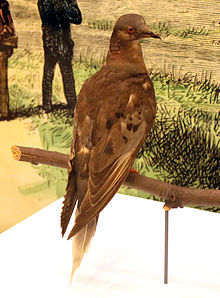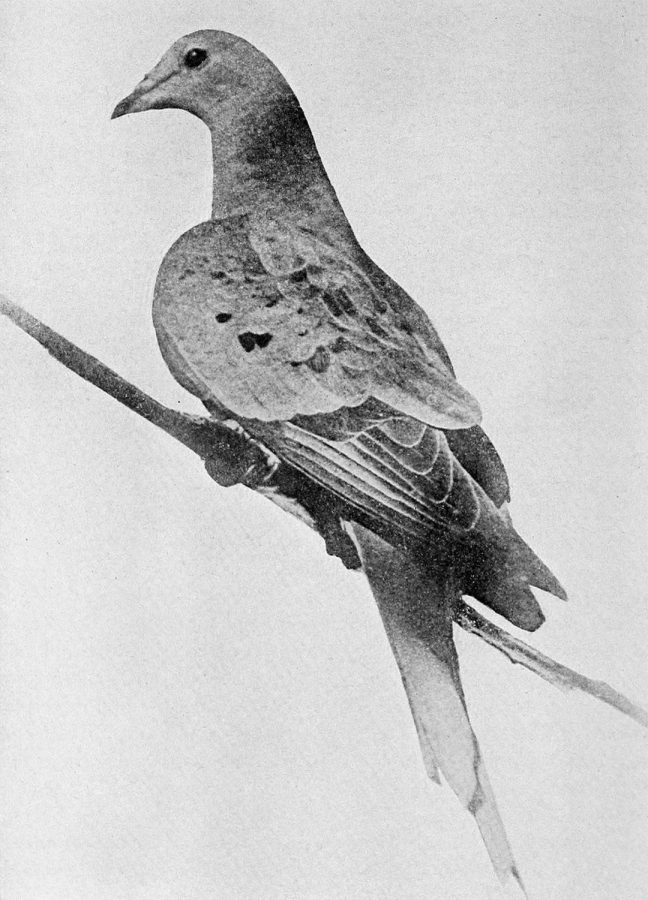Martha: The Final Passenger Pigeon
February 25, 2021
BY CRICKET COLLISTER
Passenger Pigeons were a common bird in the early 1800s. The estimated population then was close to 3 billion birds, but by 1900, none were alive in the wild. The last bird in captivity was Martha, who lived at the Cincinnati Zoo and Botanical Gardens. Martha died on September 1st, 1914, and never laid one fertile egg in her 29-year lifespan.
Passenger Pigeons travelled in large flocks throughout the eastern and midwestern United States. They ate mostly acorns and beech nuts and used their large numbers to outcompete the other nut eating species. However, their life became more difficult when it was discovered that they tasted good, too. With extreme numbers and their close proximity to each other, hunting was easy and convenient. Their survival strategy of flying in large flocks kickstarted their extinction.
Modern day environmentalism arrived too late to help Martha and the other passenger pigeons. In 1900, before Martha had passed away, Republican Congressmen John F. Lacey introduced the first nationwide wildlife-protection law. It banned the interstate shipping of unlawfully killed game. His motivation for this law was the near extinction of the pigeons.
Both of Martha’s male companions died at the Cincinnati Zoo in 1910 as well. Martha was a celebrity and many people came to see her. She soon became an endling, meaning the last known individual of a species. Offers of 1,000 dollars were given to anyone who could find a mate for Martha. Even before her death, Martha suffered from an apoplectic stroke, which left her weak. The zoo accommodated her by building a lower roost, since she was too weak to reach her old one. Despite attempts to protect her and her species, she passed away.

When she died, she was placed in a 300 pound block of ice and put on a train to Washington D.C.. Today. Near the giftshop of the Smithsonian Museum, there is a large glass case. Inside this case is Martha, where she stays in her final resting place. She is mounted as if she’s perching on a stick. For a long time, she stayed locked in a safe of the Smithsonian’s research collection. Her first public appearance occurred in 1999, but she has been put on public display since 2014.


Pablo Ernesto • Mar 25, 2021 at 2:08 pm
What to say? Unfortunately this species of pigeon and many other species extinct by us (humans) are part of our shame! Some still argue that hunting is necessary for the balance of nature, I see no scientific basis for this and history shows us the mess we have caused! We are an invasive species, we are even a pest … just apply to ourselves the analysis we use to classify other species … nowadays it’s very common to read articles talking about cats as wild bird killers, but… What about us? How much individuals (animals) we kill every day, week, month or year? Talking on wildlife only…
Regrettable but true!
Pablo Ernesto • Mar 25, 2021 at 2:04 pm
What to say? Unfortunately that species of pigeon and many other species extinct by us (humans) are part of our shame! Some still argue that hunting is necessary for the balance of nature, I see no scientific basis for this and history shows us the mess we have caused! We are an invasive species, we are even a pest … just apply to ourselves the analysis we use to classify other species … Nowadays it’s very common read articles talking about cats as wild birds killers, but… What about us? How much individuals (animals) we kill every day, week, month or year?
Regrettable but true!